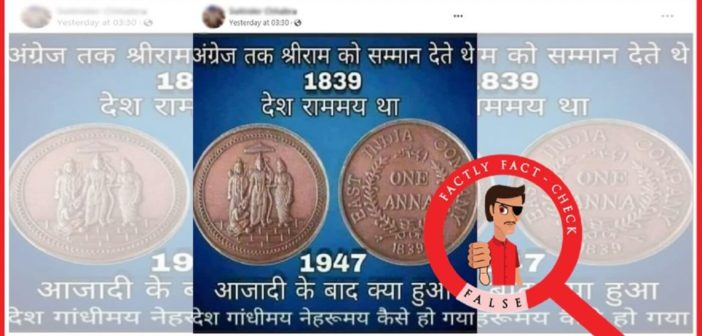A photo is being shared on social media claiming that the coins depicting the portrait of lord Rama, Sita and Hanuman were issued during the British regime in India. The photo shows the obverse and reverse view of a purported ‘one anna’ coin issued by the East India Company in 1839. This post claims that before India’s Independence in 1947, the British also used to give respect to lord Rama. Let’s verify the claim made in the post.
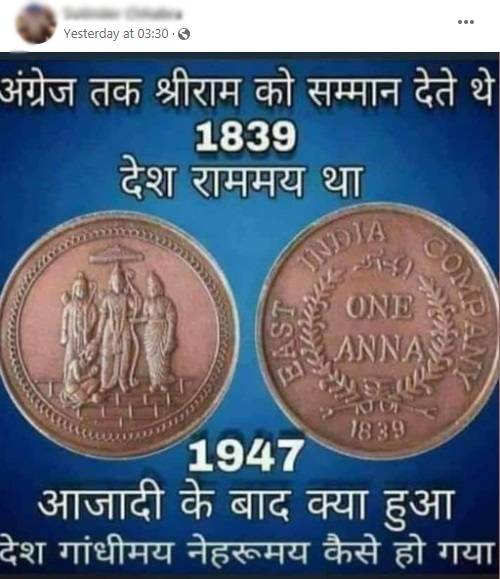
Claim: A photo of a purported coin from 1839 confirms that coins depicting Lord Rama were issued during the British regime before India’s Independence.
Fact: The British Government did not issue coins depicting Lord Rama or any other Hindu gods’ portrait during their rule in India. No such coin depicting Lord Rama’s portrait was issued under the British before India’s Independence. These counterfeit coins depicting Hindu gods were recently manufactured for sale to foreign tourists. These counterfeit coins are available for purchase on different e-commerce websites. Hence, the claim made in the post is FALSE.
When we searched to check whether the British Government had issued any such coins depicting Lord Rama before India’s Independence, we found the complete collection of coins that were issued during the East India Company and the British regime on the Reserve Bank of India (RBI) website. The coins issued under William IV (1830-37) and Queen Victoria’s (1837-1901) regime can be seen here and here. During Victoria’s regime as the Queen of the United Kingdom, the East India Company issued coins valuing one-twelfth anna, quarter anna, half anna and two annas. The ‘one anna’ coins were not in use during Queen Victoria’s regime. All these coins issued during Queen Victoria’s regime bore the portrait of Queen Victoria. The coins issued during the other British King’s reign before India’s Independence can be seen here, here and here. None of these coins issued by the British Government had lord Rama’s portrait on it.

The Government of India’s Archeological Survey of India published a document detailing the history of the coinage of the territories of the East India Company in the Indian peninsula. No such coin depicting Hindu gods portrait was found in the coinage collection pictures shared in the document.
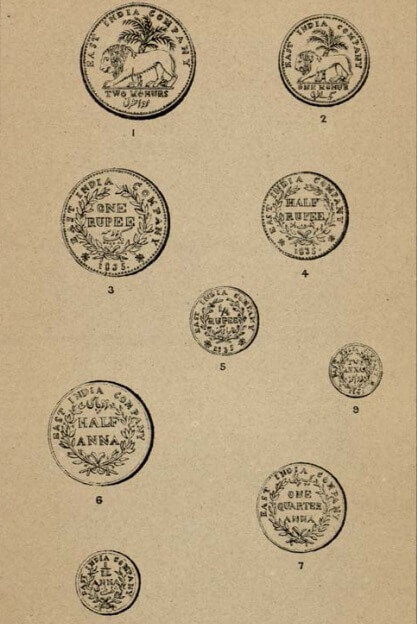
Kingdoms in the South had reference to Gods in the coins issued by them. The Madras presidency in the early 19th century had coins featuring temple gopuram and Vishnu. However, we could not find the exact coin mentioned in the viral post.
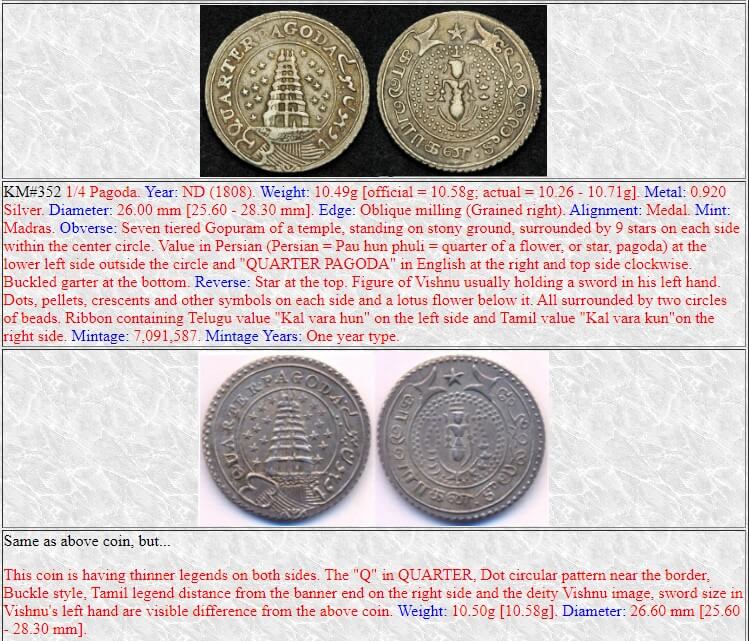
The India Today Fact-Check team contacted Sanjib Singh, the spokesperson of the National Museum in Delhi, regarding these coins circulating on social media. Speaking to ‘India Today’, Sanjib Singh said, “East India Company did issue coins in India which were made of Corolina (Gold), Anglina (Silver), Cupproon (Copper) and Tinny (Tin). Across the world, till now there is absolutely no reference of coins with Hindu Gods inscribed on them”.
Several Indian private manufacturing companies are designing similar coins depicting Hindu gods portraits and selling them on different e-commerce websites. According to an article published by the ‘coinquest’ website, the copper coins with the inscription of East India Company, and usually dated on or before 1839 are mostly a ‘spiritually oriented token recently manufactured and sold to tourists.’ “…these pieces are modern, counterfeit coins made to look old and be valuable.”
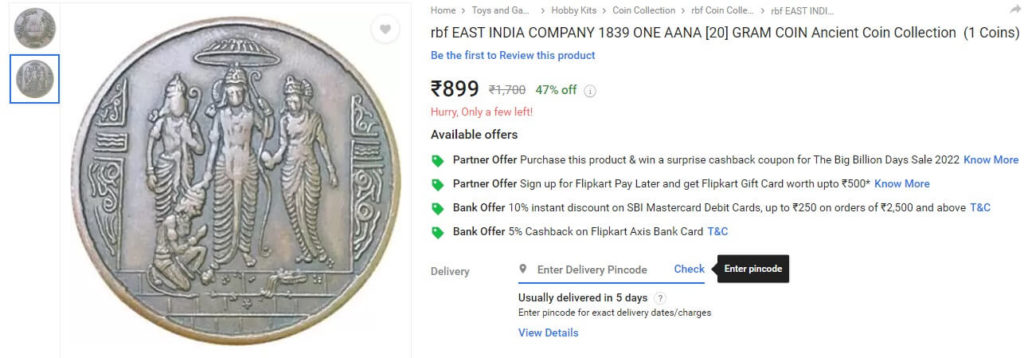
Earlier, when a similar duplicate coin depicting lord ram was being shared as a purported 1818 coin issued during the Mughal era in India, FACTLY published a fact-check article debunking that claim.
To sum it up, the British did not issue any coins depicting Lord Rama’s portrait before India’s Independence.


